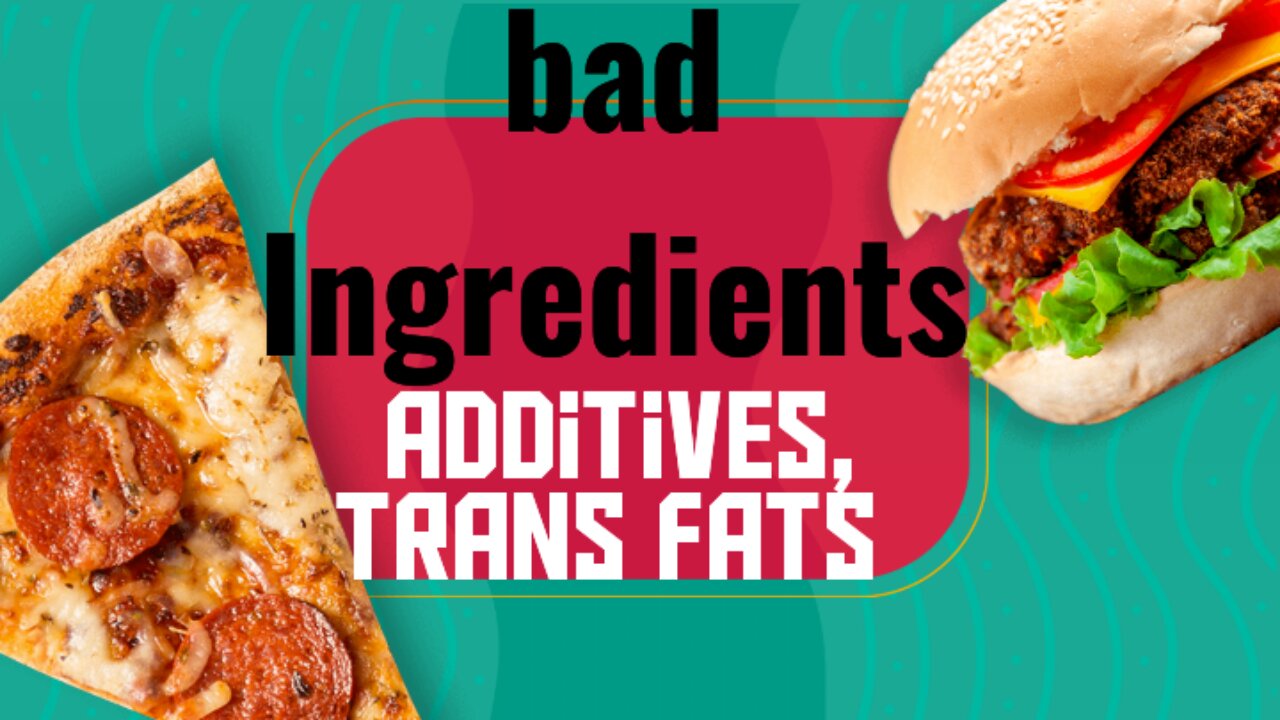Premium Only Content

poor food ingredients, additives, & trans fats
Ingredients, Additives, and Trans Fats: What You Need to Know
Understanding the ingredients and additives in the foods you eat is essential for making healthier choices and avoiding hidden risks. Food ingredients provide nutritional value, but additives—such as preservatives, artificial colors, sweeteners, and flavor enhancers—are often added to extend shelf life or improve taste. While some additives are considered safe, others may contribute to health concerns like digestive issues, allergies, or long-term metabolic problems.
One of the most harmful additives found in processed foods is trans fats. Often listed as “partially hydrogenated oils” on labels, trans fats are artificially created fats used to improve texture and increase product shelf stability. Research shows that trans fats raise LDL (bad cholesterol), lower HDL (good cholesterol), and significantly increase the risk of heart disease, obesity, inflammation, and type 2 diabetes. Even small amounts can be damaging, which is why many health organizations recommend avoiding them entirely.
When reading nutrition labels, pay attention to hidden ingredients and additives such as MSG, high-fructose corn syrup, artificial flavors, sodium nitrite, and synthetic dyes. Choosing whole, minimally processed foods helps reduce exposure to harmful additives and eliminates the risk of consuming trans fats.
For optimal health, focus on foods with clean ingredients, natural additives (like vitamin C as a preservative), and zero trans fats. Opting for fresh fruits, vegetables, whole grains, lean proteins, and healthy fats supports long-term wellness and protects against diet-related diseases.
---
✅ SEO Keywords Integrated Naturally: ingredients, food additives, trans fats, partially hydrogenated oils, processed foods, harmful food additives, nutrition labels, heart health, cholesterol, healthy eating.
-
 LIVE
LIVE
Chad Prather
20 hours agoEven Now!! Is It Too Late For A Miracle?
1,285 watching -
 LIVE
LIVE
LFA TV
12 hours agoLIVE & BREAKING NEWS! | MONDAY 10/6/25
5,846 watching -
 LIVE
LIVE
JULIE GREEN MINISTRIES
1 hour agoLIVE WITH JULIE
17,642 watching -
 LIVE
LIVE
The Bubba Army
2 days agoBad Bunny Disrespectful? - Bubba the Love Sponge® Show | 10/06/25
3,375 watching -
 LIVE
LIVE
BEK TV
2 days agoTrent Loos in the Morning - 10/06/2025
184 watching -
 1:21:55
1:21:55
Mike Rowe
4 days agoThis Is How We CHANGE Education Today | Meredith Olson #451 | The Way I Heard It
7.41K11 -
 1:18:46
1:18:46
Steve-O's Wild Ride! Podcast
3 days agoJacoby Shaddix Breaks Down Papa Roach Longevity | Wild Ride #269
1.39K2 -
 17:42
17:42
Nate The Lawyer
2 days ago $2.26 earnedHow A Criminal Illegal Alien Scammed His Way Into A $300k Government Job.
5.36K10 -
 28:46
28:46
DeVory Darkins
13 hours ago $14.38 earnedPritzker HUMILIATED after brutal fact check as Democrat candidate calls for political assassination
16.1K91 -
 19:54
19:54
Forrest Galante
10 hours agoPrivate Tour Of America's Best Marine Animal Facility
28.2K7
